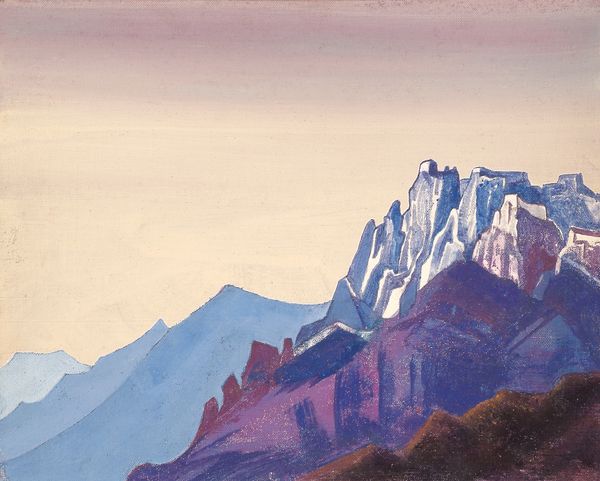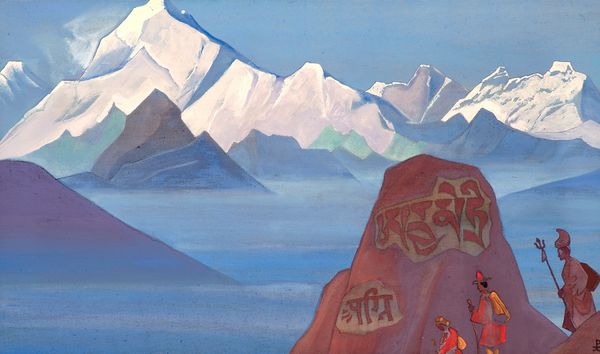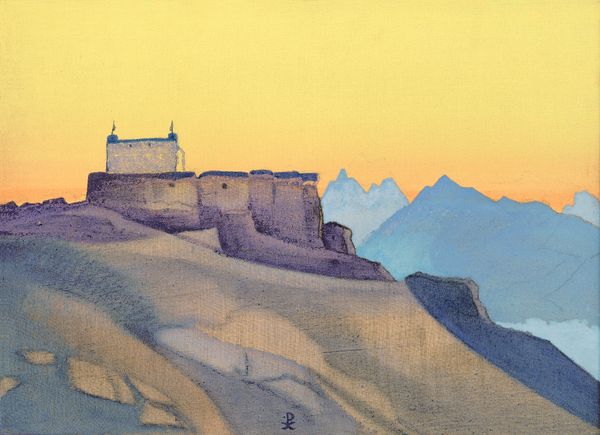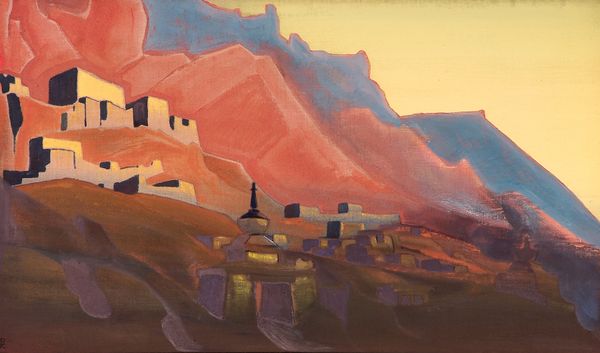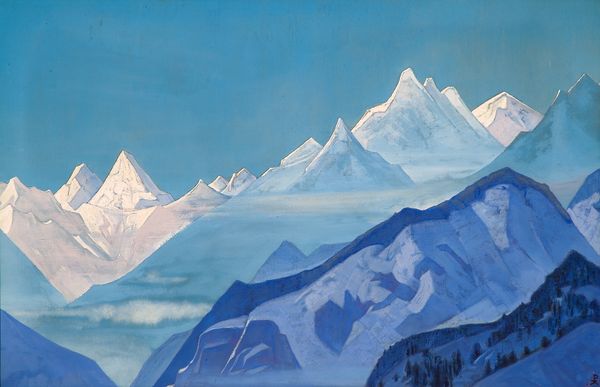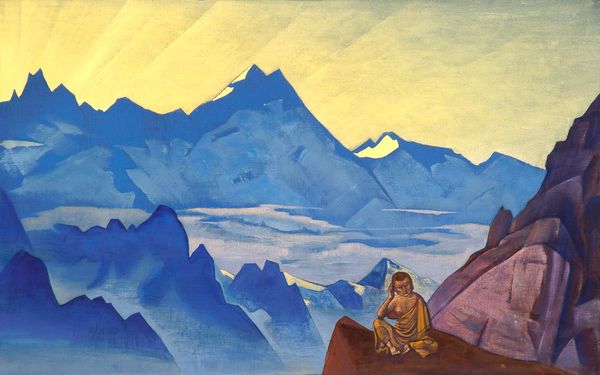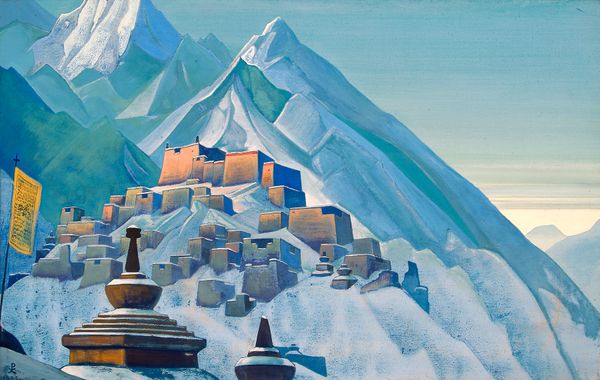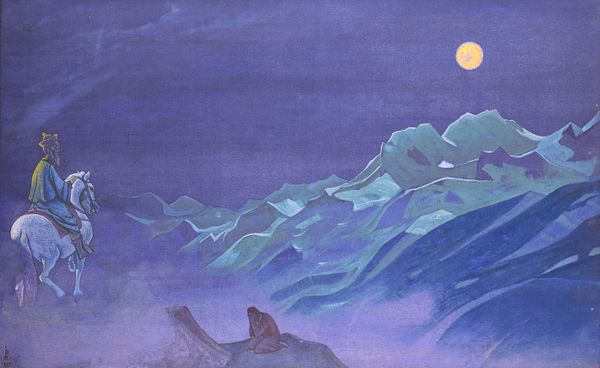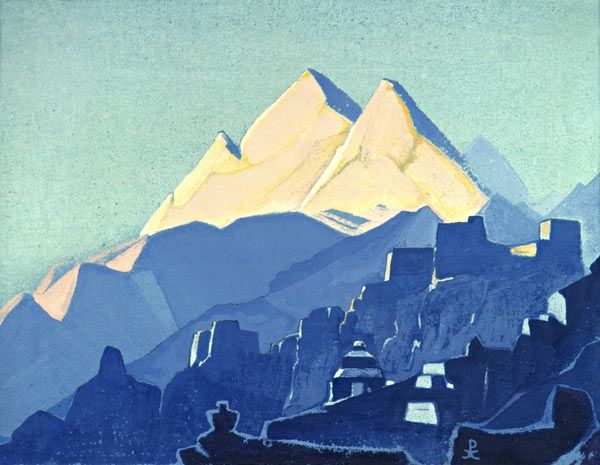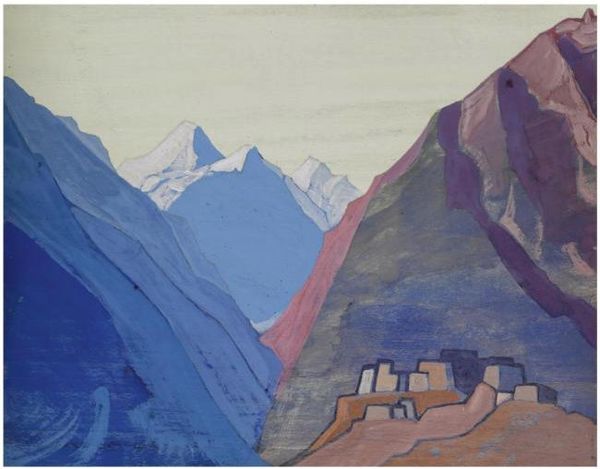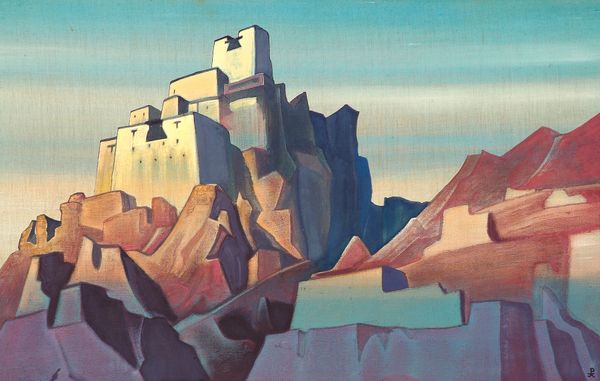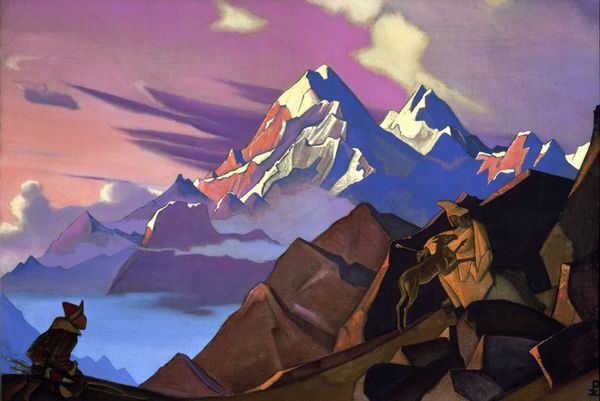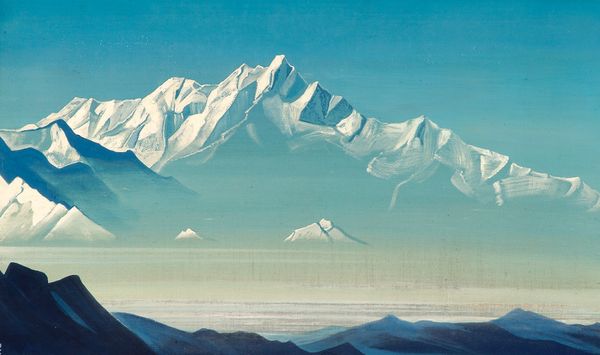
Path to Kailas. Monastery. 1932
0:00
0:00
nicholasroerich
Nicholas Roerich Museum, New York City, NY, US
Copyright: Public domain
Curator: Looking at Nicholas Roerich's "Path to Kailas. Monastery.", created in 1932, one is immediately struck by the dreamlike quality evoked by the color palette. Editor: Absolutely, there's an otherworldly stillness about it. The composition, predominantly blues and ochres, creates a sense of immense scale and almost spiritual silence. Curator: Roerich employed tempera and watercolor to produce this symbolic landscape, and what I find compelling is how it represents the artist’s own spiritual journey and his engagement with the Theosophical Society, evident in the imagery he chose and how that impacted his choice of materials. Editor: Precisely, Roerich skillfully simplifies the forms to their essential geometry, the mountain a stark pyramid, the monastery a collection of rectangular blocks, it reduces complex forms down to their simple structures which lends it this archetypal feel. There is a calculated rhythm. Curator: The labor involved in obtaining and mixing these pigments is important, especially considering his travels across Asia. How might his artistic production support his beliefs about access and egalitarianism? The act of making art becomes a lived spiritual exercise that engages with political dimensions. Editor: And what meaning do we take away when considering how that process influenced these choices, how the materiality reflects the symbolic weight and the emotional heft he intended. We can contemplate that against how the interplay of light and shadow falls across those surfaces to guide your eye across the whole landscape. It adds a mystical or philosophical bent to this otherwise literal view. Curator: So, by interpreting "Path to Kailas. Monastery." through its materiality and historical contexts, we see how Roerich uses landscape as a political vehicle for social transformation as he promotes dialogue between cultures during political strife. Editor: Right, Roerich really plays with space, using color and simple forms to lead the eye toward the towering Mount Kailas, inviting the viewer into a moment of reflection. Curator: Reflecting on Roerich's methods certainly gives you more to appreciate about the art and social landscape of the early twentieth century. Editor: The composition and stark simplicity speak volumes, capturing an ineffable grandeur in what initially presents itself as a rather simple scene.
Comments
No comments
Be the first to comment and join the conversation on the ultimate creative platform.
